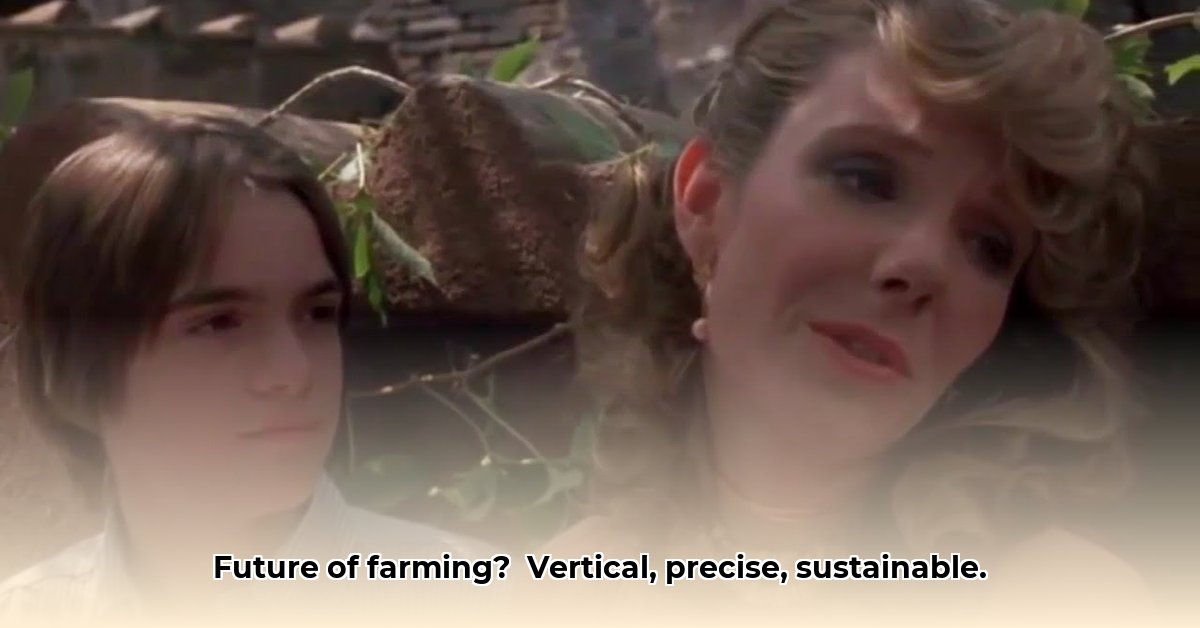
Revolutionizing Food Production in Developing Countries
Feeding a growing global population, particularly in developing nations, presents a monumental challenge. Traditional agricultural practices often struggle to meet the increasing demand while simultaneously protecting the environment. This necessitates innovative, sustainable solutions, and precision vertical farming is emerging as a powerful contender. But can this technology truly address the intricate challenges faced by developing countries? The answer, as we'll explore, is complex but ultimately offers a promising pathway towards a more secure and sustainable food future.
How can vertical farming address food security challenges in developing countries, especially concerning energy efficiency and resource management? This is the core question guiding our exploration of this transformative technology.
The sheer scale of the challenge is undeniable: millions endure food insecurity, and climate change threatens already fragile agricultural systems. Yet, amidst these difficulties, vertical farming offers a compelling alternative, a beacon of hope in the face of adversity. We'll explore the key benefits and hurdles, drawing from real-world examples and focusing on the practical steps needed for successful implementation.
What is Precision Vertical Farming?
Imagine skyscrapers dedicated not to offices, but to cultivating food. That's the essence of vertical farming – growing crops in vertically stacked layers, often indoors, in climate-controlled environments. This innovative approach dramatically increases yields per unit of land, making it particularly appealing in regions with limited arable land.
"Vertical farming allows us to decouple food production from geography and weather patterns," explains Dr. Anya Sharma, Agricultural Engineer at the University of California, Berkeley. "This is crucial in regions often plagued by drought, unpredictable rainfall, or limited land availability."
This controlled environment allows for precise management of resources, optimizing water and nutrient use, and minimizing the environmental impact. Furthermore, vertical farms can be located closer to urban centers, reducing transportation costs and emissions.
The Environmental and Economic Benefits
Vertical farming is significantly more environmentally friendly than many traditional methods. The reduced land footprint helps protect natural ecosystems. Precise irrigation systems conserve water, a critical resource in many developing countries. Controlled environments minimize pesticide use and nutrient runoff, protecting water quality. And, increasingly, vertical farms are powered by renewable energy sources like solar power, creating a truly sustainable approach.
But the benefits are not just environmental. Vertical farming can also create economic opportunities, providing jobs and boosting local economies. Furthermore, the year-round production capacity ensures a consistent food supply, enhancing food security.
But is vertical farming a viable solution for all developing countries? The high initial investment required for infrastructure and technology presents a significant barrier for many regions. The technology also demands reliable energy and advanced technological expertise, both of which are not universally available.
Addressing the Challenges: A Multi-pronged Approach
Addressing the challenges associated with vertical farming requires a multi-faceted strategy. This involves:
Technological Advancements: Ongoing research and development are crucial to making vertical farming more affordable and accessible. This includes the development of more energy-efficient growing systems and affordable technologies.
Government Support: Governments can play a vital role by investing in research, providing subsidies to farmers, and creating supportive policies that encourage the adoption of vertical farming technologies.
Public-Private Partnerships: Collaboration between governments, private companies, and NGOs is essential to bridge the financial and technological gaps. This involves sharing knowledge, providing training, and investing in infrastructure.
Community Engagement: Local communities must be actively involved in the implementation of vertical farming projects. This ensures the projects are tailored to their needs and are culturally appropriate.
Did you know that LED lighting, while initially expensive, can reduce energy consumption by up to 70% compared to traditional lighting methods in vertical farms? This highlights the potential for long-term cost savings and environmental benefits.
The Future of Sustainable Agriculture
Vertical farming is not a panacea, but it presents a powerful tool in the fight against food insecurity and environmental degradation. By addressing the challenges and embracing collaboration, we can unlock the immense potential of this technology to build a more sustainable and equitable food system for developing countries. The journey towards a greener and more secure food future requires a combined effort – a partnership between innovation, policy, and community engagement. Only then can we truly harness the transformational potential of precision vertical farming.